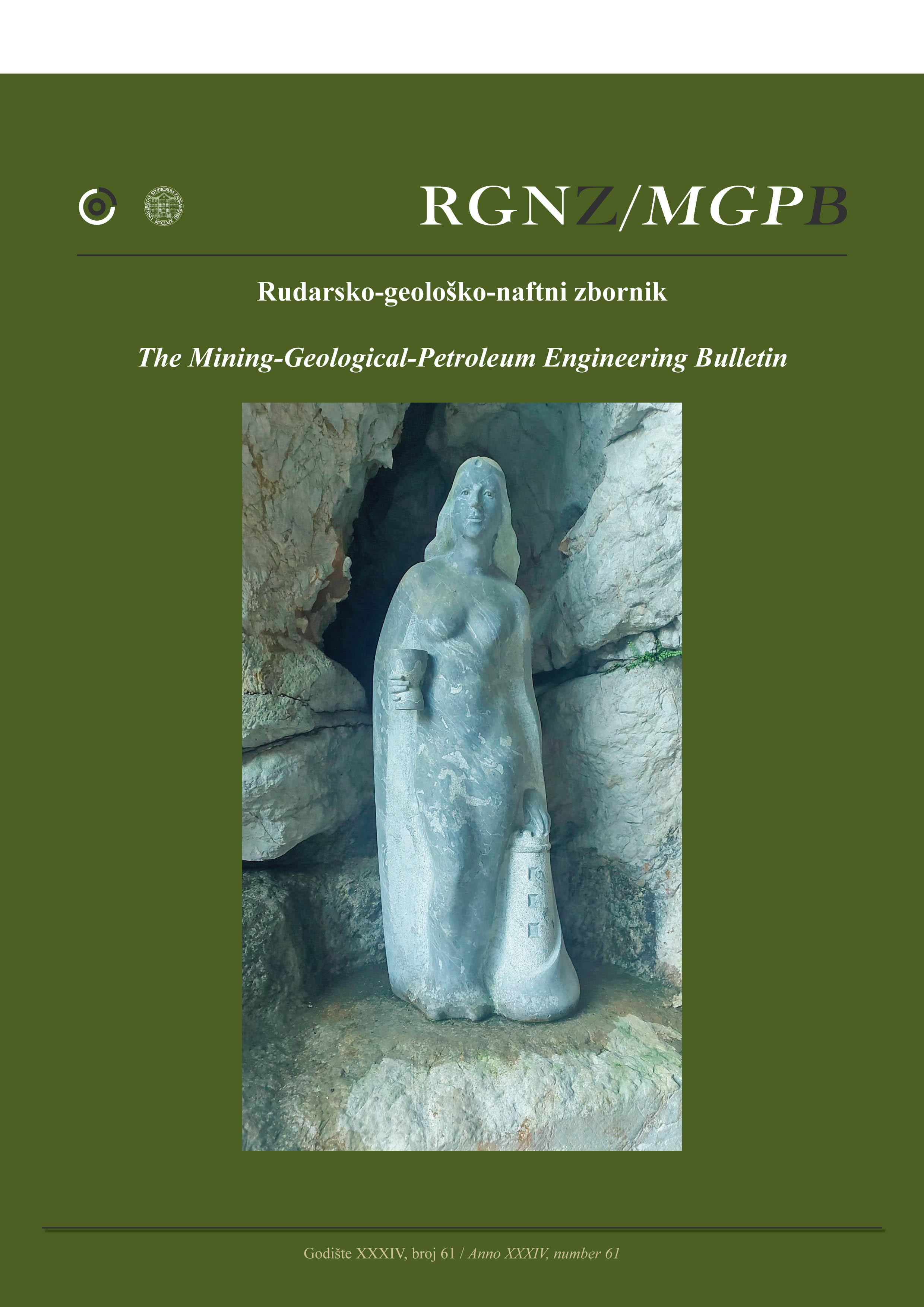Risk assessment of longwall mining due to coal face failure
DOI:
https://doi.org/10.17794/rgn.2022.5.4Keywords:
risk assessment, risk matrix, face failure, longwall coal minesAbstract
Face failure is a typical phenomenon in longwall coal mines that can have a wide range of consequences. Face failure, which includes wall spall and roof collapse occurrences, is a hazardous virus that, if not managed, spreads fast across all stages of coal mining and has the potential to disable the mine. Based on this research, face failure may have a detrimental influence on technical, environmental, community, safety, and economic concerns, and its negative effects will leave an unfavourable legacy for the future. As a result, these impacts can be mitigated by effective management and risk management approaches. The quantitative and qualitative face failure risk model provided in this study has a considerable potential as a suitable tool for decision makers to analyse failure risk. Face failure-related high-risk variables can be discovered using this approach, which also makes comparing various mines easier from a face failure aspect. For validation, the model was evaluated in the Parvadeh, Negin and Pabedana coal mines. The study's findings revealed that Parvadeh's face failure risk factor was 5058, indicating a high risk in this mine due to mechanized mining. Furthermore, the scores of the Negin and Pabedana mines were computed as 3019 and 3165, respectively, indicating that they were in the moderate risk category owing to traditional mining.
Downloads
Published
How to Cite
Issue
Section
License
Copyright (c) 2022 authors and journal

This work is licensed under a Creative Commons Attribution 4.0 International License.
Creative Commons-BY
Authors who publish with this journal agree to the following terms:
In agreeing this form, you certify that:
- You read the ethical codex of the RGN zbornik available at journal web.
- You submitted work is your original work, and has not previously been published and does not include any form of plagiarism.
- You own copyright in the submitted work, and are therefore permitted to assign the licence to publish to RGN zbornik.
- Your submitted work contains no violation of any existing copyright or other third party right or any material of an obscene, libellous or otherwise unlawful nature.
- You have obtained permission for and acknowledged the source of any illustrations, diagrams or other material included in the work of which you are not the copyright owner.
- You have taken due care to ensure the accuracy of the work, and that, to the best of your knowledge, there are no false statements made within it.
- All co-authors of this submitted work are aware of, and in agreement with, the terms of this licence and that the submitted manuscript has been approved by these authors.
Publication licence
You retain copyright in your submitted work, according to journal license policy (CC-BY). By signing this form you agree that RGN zbornik may publish it under the publication licence. In summary the licence allows the following:
Anyone is free:
- To copy, distribute, display, and perform the work.
- To make derivative works.
Under the following conditions:
- The original author must always be given credit.
- The work may not be used for commercial purposes.
- If the work is altered, transformed, or built upon, the resulting work may only be distributed under a licence identical to this one.
Exceptions to the licence
In addition to publishing the work printed under the above licence, RGN zbornik will also enable the work to be visible online.
The journal editorial can change the licence rules anytime but it cannot retroactively restrict author(s) rights.


